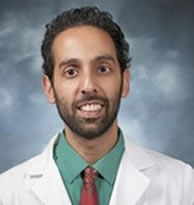Adequate debridement, control of infection, off-loading of pressure, and appropriate topical management are the most important interventions in treating nonhealing wounds. New treatments such as recombinant human growth factors and skin substitutes can help expedite healing.
The incidence of diabetes has increased to epidemic proportions. Over the next 2 decades the incidence of diabetes will go up by 60% in the United States. One fifth of patients with diabetes will develop foot ulcers at some point in their lifetime. Improper or incomplete care of the feet in people with diabetes can increase the prevalence of nonhealing lower-extremity ulcers that may, in turn, lead to serious sequelae. Diabetic foot ulcers are the most common cause of lowerextremity amputations. The majority of these ulcers are a cumulative result of reduced sensation in the feet from neuropathy, acute or repetitive trauma, and reduced blood flow to the feet from peripheral vascular disease (PVD) (see Figure 1, page 00). An American Diabetes Association consensus group found that among persons with diabetes, the risk of foot ulceration was increased among men, patients who had diabetes for more than 10 years, and those with poor glucose control or with cardiovascular, retinal, or renal complications.1 Because 30% of ulcers recur, patients must be educated regarding foot hygiene and reevaluated at regular intervals.
WOUND MANAGEMENT TECHNIQUES
In performing a thorough assessment of ulcers, determine the following characteristics:
- Etiology
- Location
- Size
- Depth or stage of development
- Presence of exudate
- Occurrence of necrotic tissue
- Signs of infection
- Wound oxygenation
The University of Texas Health Science Center Diabetic Wound Classification System is commonly used for classifying foot ulcers. It is helpful for evaluating wound depth, infection, and PVD in every category of wound assessment (see Table 1, page 00).
Adequate debridement, control of infection, off-loading of pressure, and appropriate topical management are the most important therapeutic interventions in treating nonhealing wounds, and new treatments, such as recombinant human growth factors and skin substitutes, can help expedite healing.
Adequate debridement
To properly heal, ulcers must be clean and free of infection and necrotic tissue. Wound healing is impaired when any of the following is present: eschar, purulence, infection, or large areas of necrotic tissue. If wound healing is to occur, areas of devitalized or compromised tissue must first be removed by aggressive debridement, preferably by sharp surgical debridement. Neuropathic ulcers can often be debrided aggressively and promptly without anesthesia because of the patient's inability to feel pain.
In patients with primarily ischemic lesions, marginal neuropathic sensation may render them hyperesthetic. In this case, the best course of pain management is to use a local anesthetic without epinephrine. The use of topical lidocaine gel can also help reduce or eliminate pain associated with surgical debridement.
Callus and necrotic tissue must be completely excised to provide a clean ulcer base for granulation tissue formation and reepithelialization. The clinical importance of adequate debridement is widely recognized. Study results showed that high rates of debridement enhanced the ulcer healing rate of patients treated with the topical recombinant growth factor becaplermin more than the already increased rate of healing provided by it alone.2 Several methods of debridement can be used with diabetic foot ulcers.
Surgical Considered the gold standard, this method completely removes hyperkeratotic tissue, excess fibrin, and necrotic tissue. Because it causes minimal destruction of tissue and only a mild to moderate amount of bleeding, sharp surgical debridement can be easily performed in an office setting. Instruments needed include a number 10 or number 15 scalpel, small dissecting scissors, forceps, and a medium-sized bone curette.
. . .Continue to read rest of article (PDF).
!-- AddThis Button BEGIN -->
Dr. Jeffrey Stone, DO, MPH, FCCWS, specializing in Wound Care and Hyperbaric Medicine, serves as Medical and Fellowship Director for the Hyperbaric Medicine Unit at the Institute for Exercise & Environmental Medicine at Texas Health Dallas. Dr. Stone received his medical degree from Western States University and received a Master of Public Health degree from Harvard University. Dr. Stone completed a residency in aerospace medicine at Brooks Air Force Base and a fellowship in hyperbaric medicine and Wound care at the U.S. Air Force School of Aerospace Medicine. He is one of the first 60 physicians in the U.S. to receive his certification in Wound Care. Dr. Stone currently provides care to patients in acute care, LTAC, long term care facilities SNF and Nursing Home) and outpatient care.
©Copyright - All Rights Reserved
DO NOT REPRODUCE WITHOUT WRITTEN PERMISSION BY AUTHOR.










